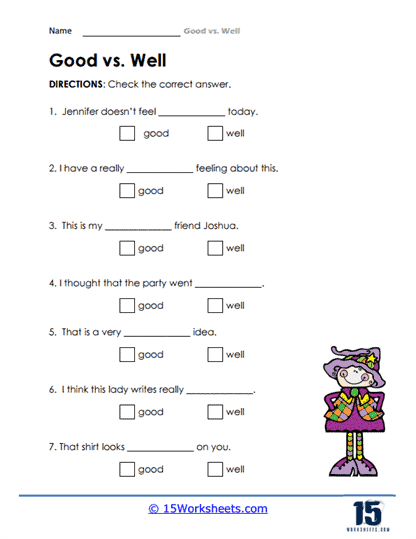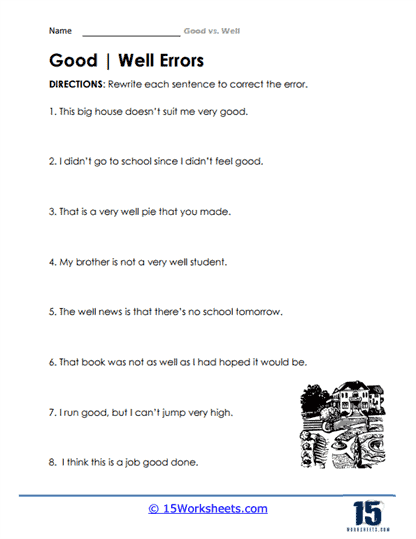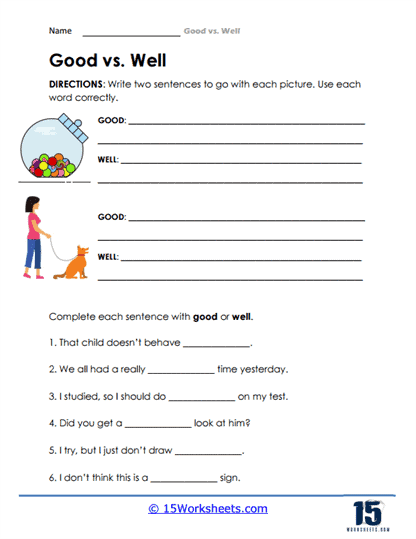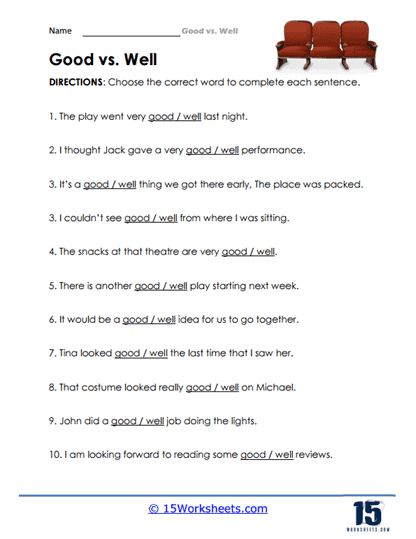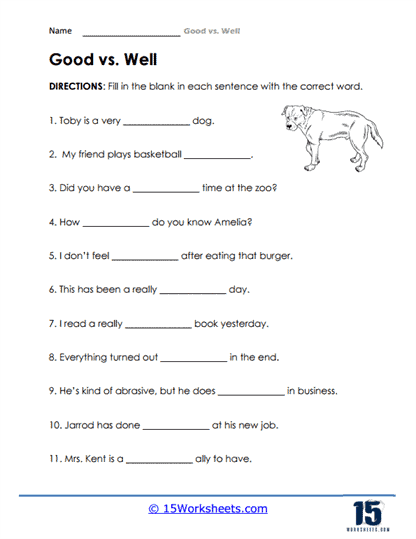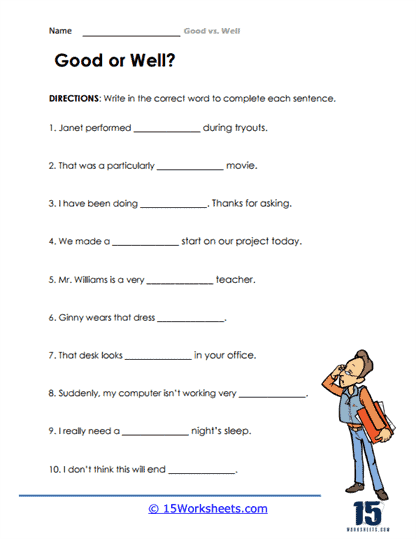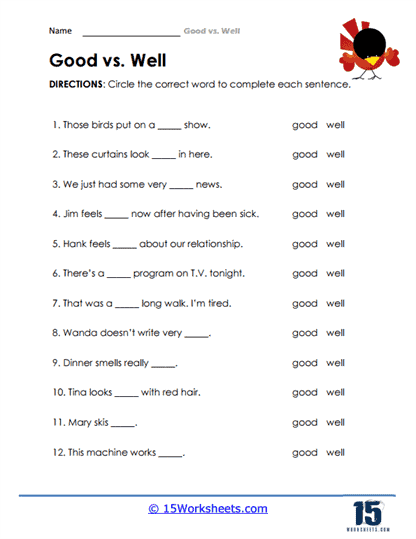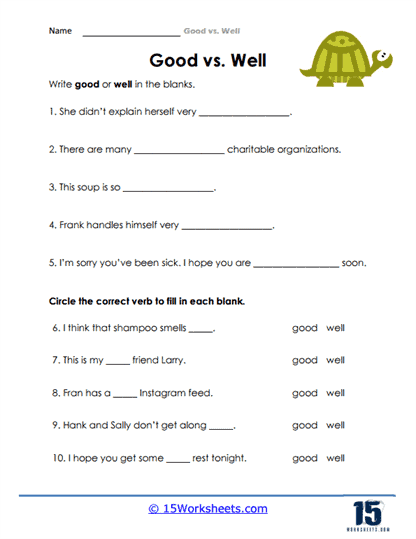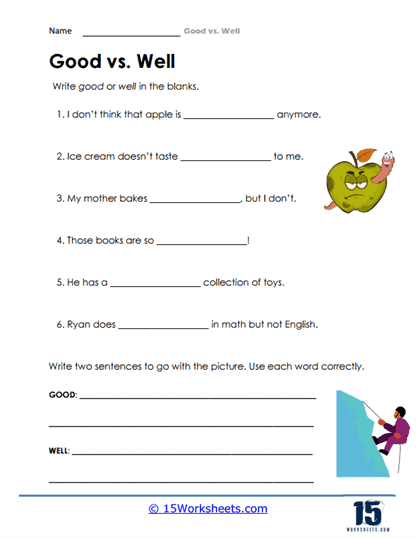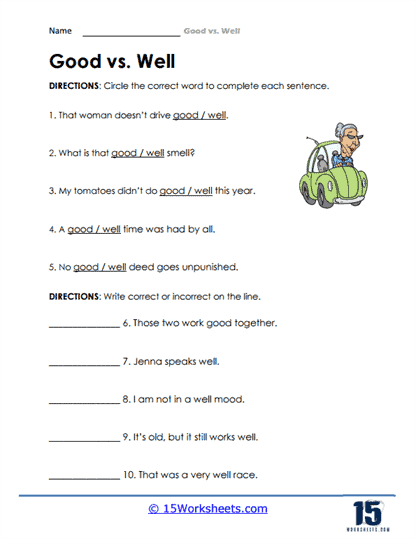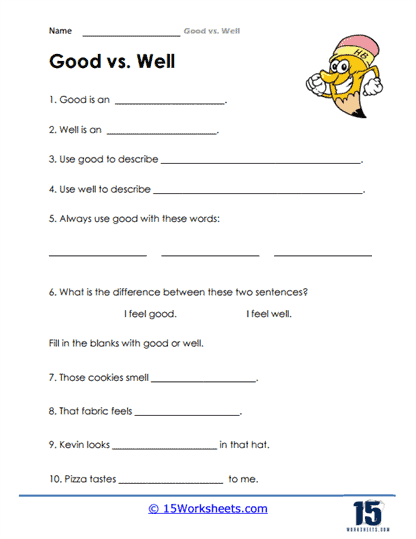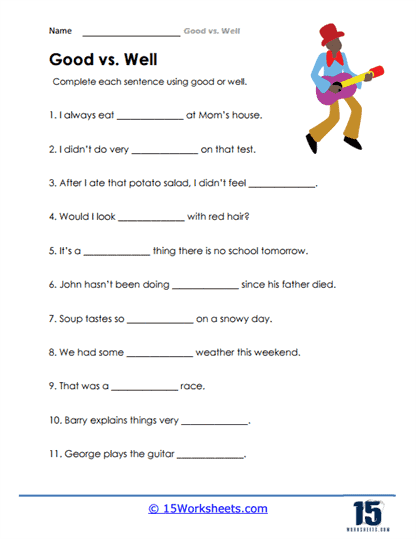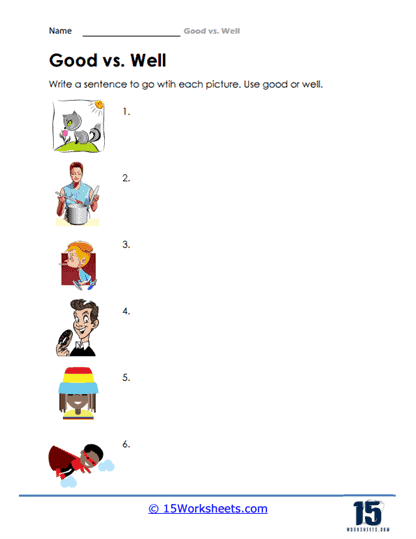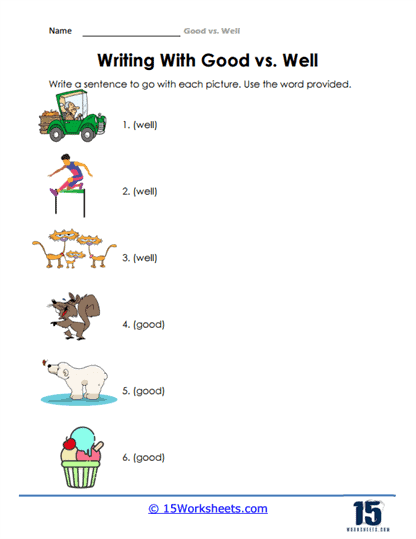Good vs. Well Worksheets
All About These 15 Worksheets
This collection of worksheets is designed to help students improve their understanding and usage of the English adjectives “good” and “well.” The worksheets cover various aspects of these adjectives, including their meaning, forms, and usage in different contexts. Through a variety of exercises, students will learn how to correctly use “good” and “well” in sentences. The worksheets also provide practice in identifying common mistakes in the usage of these adjectives and how to correct them. Through these, worksheets, students will:
- Identify when to use “good” vs. “well” in sentences;
- Rewrite sentences with incorrect usage of adjectives “good” and “well”;
- Properly use “good” and “well” in their own sentences;
- And understand the function of both adjectives.
By completing these worksheets, students will develop greater confidence and proficiency in using “good” and “well” correctly in their spoken and written English, which will help them communicate more effectively and accurately.
Good vs. Well and when to use them
Both of these terms are used in the English language to convene a sense of achieved approval or a desired state. They are often confused and used improperly. Both words carry positive connotations, but they can only rarely be used interchangeably. You will find a higher frequency of these errors occur through speech rather than written language. Even accomplished writers will improperly use them, at times, when they are not fully evaluating the context of use. A recent study out of Miami University found that we are more prone to make this mistake through speech rather than through the written word. Which makes sense, because we often contemplate and diagnose our thoughts when we are writing rather than speaking. We have a guide below to help you understand their proper usage. These worksheets will help students become more comfortable with the usage of these terms in the context of sentences.
“Good” and “well” are both adjectives in English, but they are used in different ways.
“Good” is an adjective that describes a noun or pronoun, and it is used to describe something that is of high quality, desirable, or positive. For example:
- She is a good student.
- The movie was really good.
- He has a good sense of humor.
“Well” is an adverb that describes a verb, adjective, or another adverb, and it is used to describe how well something is done or how healthy someone is. For example:
- She sings well.
- The food tastes really well.
- He is feeling well today.
One common mistake is using “good” instead of “well” after verbs like “is,” “am,” or “are.” For example, “I am good” is incorrect, while “I am well” is correct. To remember the difference between “good” and “well,” think of “good” as a noun modifier and “well” as a verb modifier. In summary, “good” is used to describe a noun or pronoun, while “well” is used to describe a verb, adjective, or another adverb.
The proper usage of these terms really just boils down to taking the time to consider how they are being used and in what context. They are different parts of speech. If you take the time to diagnose the purpose of the word in either speech or writing, it becomes clear which term should be used.
The term good serves the role of an adjective. Adjectives modify (normally describing) nouns. They give the reader more information about the noun. When we are referring to an emotional state of being, we use this term. Take a look at an example and we will break it down:
He is a good hockey player.
In this context, the word good is used to describe the type of hockey player.
The term well serves as an adverb in a sentence. Adverbs either modify a verb, adjective, or another adverb. They are used to convey a sense of state or condition. Which means that we are focus on the concept of physical health, you will always use the term well. An example of this use would be:
She was not feeling well today.
In this case we are stating the condition of the girl. The term well serves as an adverb.

